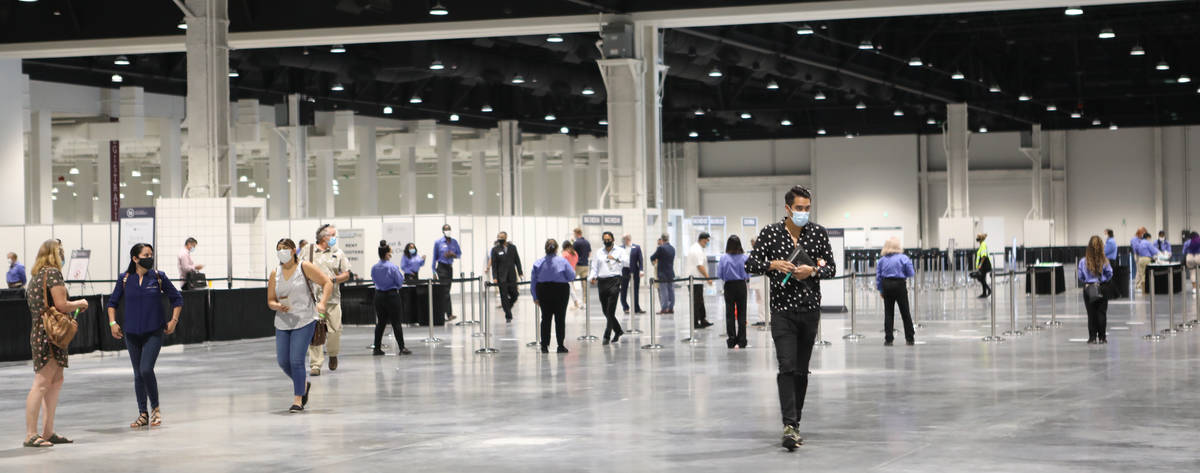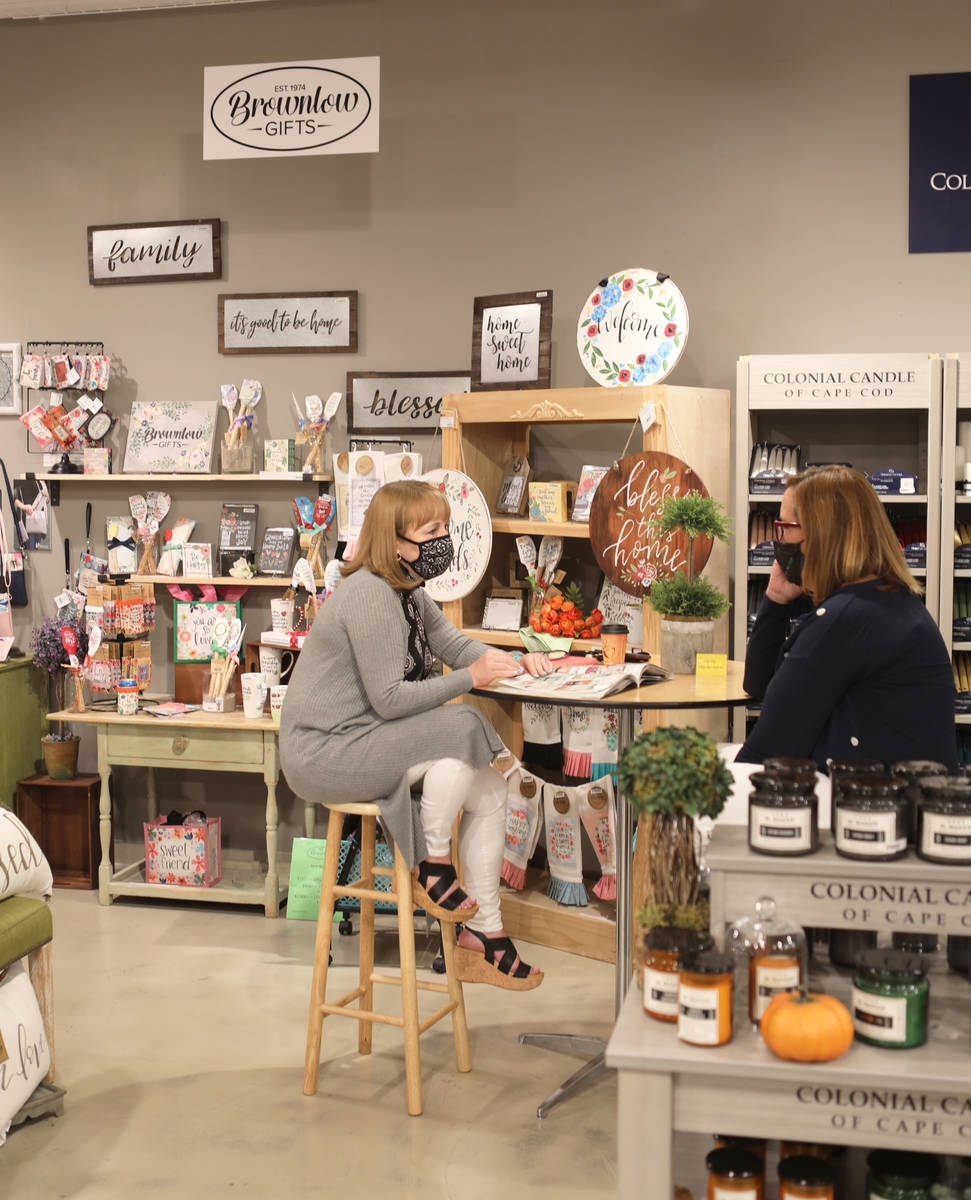Las Vegas Market takes critical steps forward
Capacity is limited to 50 percent of fire code, but Bob Maricich will take it. The CEO of the International Market Centers, operator of the World Market Center Las Vegas, is happy to see the design, furnishing and gifting worlds heading in the right direction. Part of heading in the right direction is just having a market event at all, even with limited capacity.
The April 11-15 Las Vegas Market was originally slated for January, but due to travel restrictions as a result of the COVID-19 pandemic, it was pushed to spring. Like the rest of the interior design and furnishings industry, Maricich and his team have been in adjustment mode since the pandemic took hold early last year.
But he and others in the business remain hopeful that the April market — which pairs retailers with suppliers in the furnishings, home decor and gifting industries — will be a success in its own right. Here’s a look at what IMC is doing to assure that success and also a glimpse into how design and furnishing trends are shaping up after a long year.
The April market
Under its “Together Safely” program, the IMC team has instituted protocols that align with state and federal best practices to minimize COVID-19 spread. At the event, there will be contactless registration and temperature checks; individual showroom capacities will be monitored to maintain levels at 50 percent of fire code. The size of the World Market Center complex helps matters, Maricich added.
“With a 5.5 million-square-foot footprint, you can do a lot of things seamlessly,” he said.
More than 90 percent of the showrooms will be open, and the event will be largely appointment-driven. Given the supply constraints in the business, coupled with seemingly high demand, it will likely be an atmosphere where plenty of business will be conducted.
“The people who are coming are serious about buying. They need inventory,” Maricich said. “People are hungry for merchandise. If you have anything available, I’ll bet you have a line at your showroom.”
Unlike past markets, there won’t be any big public events or celebrations. The goal is to avoid mass gatherings, for now, and the CEO also suspects retailers will be sending smaller buying teams as well.
“Where a retailer may have brought four in the past, they may only send two,” he said, adding that the crowd will be primarily regional with more people from the West Coast and Southwest attending. This market will also mark the first time the site’s new 315,000-square-foot Expo venue will be used for the event’s tradeshow. The site was completed last year, but the pandemic delayed its use.
Industry challenges
The pandemic and resulting stimulus activity spurred more spending on home design and furnishings. That’s the good news. However, supply constraints, logistics issues, like the ships off the Long Beach port that can’t dock, have put the brakes on product availability. It’s a problem, just like the pandemic itself, that brings difficulty in trying to give an accurate timeline for resolution.
“I think the design and home market has exploded during COVID because people are home and spending a tremendous amount of money renovating rooms they couldn’t get to before,” said Matthew Katzenson, CEO of Fine Lines, a gift and decor supplier who has had a permanent space at the World Market Center for seven years.
Katzenson has “moderate expectations” for the April Las Vegas Market because of the capacity constraints and the general uncertainty still surrounding travel.
“We have appointments, but a lot of people are still not sure if they’re coming. People need to feel comfortable about going out and seeing the products face to face,” he added.
The pandemic has also spurred more demand in home consumables, such as soaps, candles, fragrances, even puzzles to beat boredom. It remains to be seen whether these products will continue their run of popularity.
“It’s anything that can make you feel better during a pandemic,” noted Dorothy Belshaw, IMC’s chief customer and marketing officer.
Interior designer attendance is at about 75 percent of pre-pandemic levels, Belshaw said, adding that many homeowners are seeking guidance from interior designers but also input on supply shortages and product availability from them, too.
“Everyone I know is being affected by it (supply and product shortages). The best we can do at this point is educate our clients on the situation and set realistic expectations and timelines,” said Lisa Lee, a Las Vegas interior design professional and owner of the creative studio Rituals.
Design and home trends
The pandemic also “built awareness around how you use your home,” Maricich said. Going forward, he sees consumers continuing to look for the best way to use their homes for both work and play.
“We’re hearing of a renewed focus on multifunction. … People are really thinking creatively about the use of the home. … And that has extended outdoors as well. There’s more outdoor cooking … people are also cooking at home more, in general. So, you’ll see increases in the need for kitchenware and utensils … almost everything we touch here (at World Market Center) has great consumer demand,” he said.
Joe Dabramo, an account manager for Yosemite Home Décor, whose company sells decor items like clocks, lighting and specialty items such as accent furniture, said the past year has made it difficult to project future sales and trends overall. Still, he remains optimistic about the Las Vegas Market and plans to roll out plenty of new products at the show.
He also says that while logistics and material availability have been hampered, creativity hasn’t stopped. Designers are still listening to customers and coming up with new concepts that work for a variety of home decor applications.
“I have to give designers a lot of credit; the creativity has stayed pretty active,” he said. “I think you’re going to see a lot of new collections, styles and colors.”
Dabramo is optimistic about the industry’s future, even though he is realistic about the activity he’ll see at the April Las Vegas Market.
“We’re a resilient industry. We’ve been through tough times before … we have a way of being adventurous but knowing how to continue to move forward,” he said. “That’s a healthy fuel to keep the wheel moving.”





















